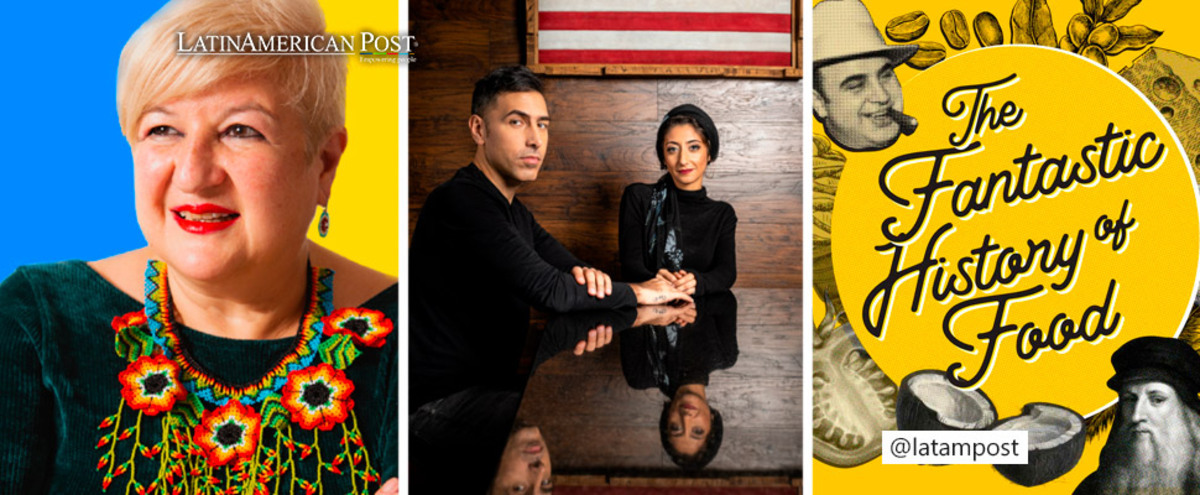Looking for what to Listen to?: You will Love these 7 Historical Podcasts
We recommend seven historical podcasts that will make you a fan of history.

Photos: Spotify
LatinAmerican Post | July Vanesa López
Escucha este artículo
Leer en español: ¿Buscando qué escuchar?: estos 7 podcast históricos te encantarán
Perhaps you found history class tedious and didn't even like it when you were in school. But the truth is that the story is not only exciting but can also become exciting. If you are already a lover of this topic or want to explore it and see what it has for you, here we recommend seven historical podcasts in English and Spanish with which you will learn, entertain yourself, and undoubtedly become a fan.
DianaUribe.fm
Diana Uribe is the most recognized chronicler of Colombia. For years she worked as a history broadcaster in a radio program called "La Historia del Mundo," For over 20 years, she has managed to amaze millions of people with the history of Colombia and the world thanks to her creative and exciting way of narrating.
In 2018, the program mutated to a podcast format, and the DianaUribe.fm project emerged, comprising different podcasts with different seasons. The most recognized are "The History of Radio and Radio in History," "History of Latin America," and his "Travel Chronicles," in which he explores different parts of the world while telling significant facts about his history.
If you want to transport yourself to other places and times from the comfort of your home, DianaUribe.fm is the perfect podcast.
Read also: Colombia al Parque and more festivals in Latin America that exalt the native
Story for Dummies
Have you ever felt that the way the story is told is boring and stuffy? You are not the only one. Luckily, there are podcasts like History for Dummies. This fun podcast started on TikTok as an account with informational and story content featuring maps with eyes and a mouth speaking with a uniquely funny Mexican accent. He explains the history of conflicts and historical and international events from this resource. As much as it is fascinating, the account has been said in a very academic and uninteresting way.
After going viral and becoming a phenomenon in Latin America, Teca, its creator, decided in June 2021 to launch a podcast in which he follows the line of his TikTok and narrates the story in more depth without ever losing the unique style that characterizes it.
Mobile Radio
In 2011 Radio Ambulante was born by Daniel Alarcón and Carolina Guerrero to spread unique stories from Latin America. Today, twelve years later, this is one of the world's most recognized podcasts in Spanish. The particularity of Radio Ambulante is the closeness it achieves with its listeners, all through spectacular narrations and a selection of incredible stories with unique protagonists.
Although Radio Ambulante is a chronicle of particular individuals, the podcast places the events it narrates in historical contexts, giving their narratives much more strength. Do you want to know more about the Argentine dictatorship? Why not do it through the story of a person who grew up in the middle of it? Are you interested in knowing how Cuba lived in the 70s? How about doing it by listening to a woman who lived her childhood in it?
Any Past Time was Before
Nieves Concostrina is the journalist behind this famous podcast in Spanish that is well known in Spain. She was the presenter of a program called Muertos Ilustres on Radio 5, an essential radio station in the European country. Concostrina began with her schedule. Any time past was earlier on the SER radio network in 2015, but years later, she migrated to the podcast, and since then, she has become much more recognized.
Concostrina explores history, from the Western to the Oriental, from parties to carnivals. But his most interesting chapters are those in which he talks about historical figures since he is very good at them. His way of narrating is hilarious but substantial enough to make it serious.
The History of the World in 100 Objects
In collaboration with the British Museum, this BBC podcast has 100 episodes narrated by Neil McGregor, director of the Museum, in which he explores the history of humans and their adaptation on planet Earth, all through objects ranging from primitive tools to a plate from the Russian Revolution.
This podcast is ideal if you want to learn about an exciting topic quickly since its episodes last only 15 minutes and are complete enough to understand everything that revolves around objects and their importance in our history.
Throughline
This NPR English-language podcast is known for its subtle yet powerful storytelling. Throughline is based on the idea that history is built from interconnected points over time. Thus, the podcast makes a historical mapping of events that are happening today and explains them in light of the past, which is nothing more than an extension of the present.
Its episodes are very up-to-date, so you will be able to learn, for example, the origin of the inflation we are currently experiencing, where the dance steps you see in the videos of artists like Beyoncé come from, or the story behind the selection of nominees for the Oscar from its origin.
The Fantastic History of Food
Are you a food lover? Do you love history? This is the perfect podcast for you. The fantastic History of Food delves into the account of the world through food. And it is that at every moment of the existence of humanity, food has been our most faithful companion, and through it, we can understand many historical facts.
This podcast will delve into the evolution of food and humanity itself, leaving you shocked and laughing.




